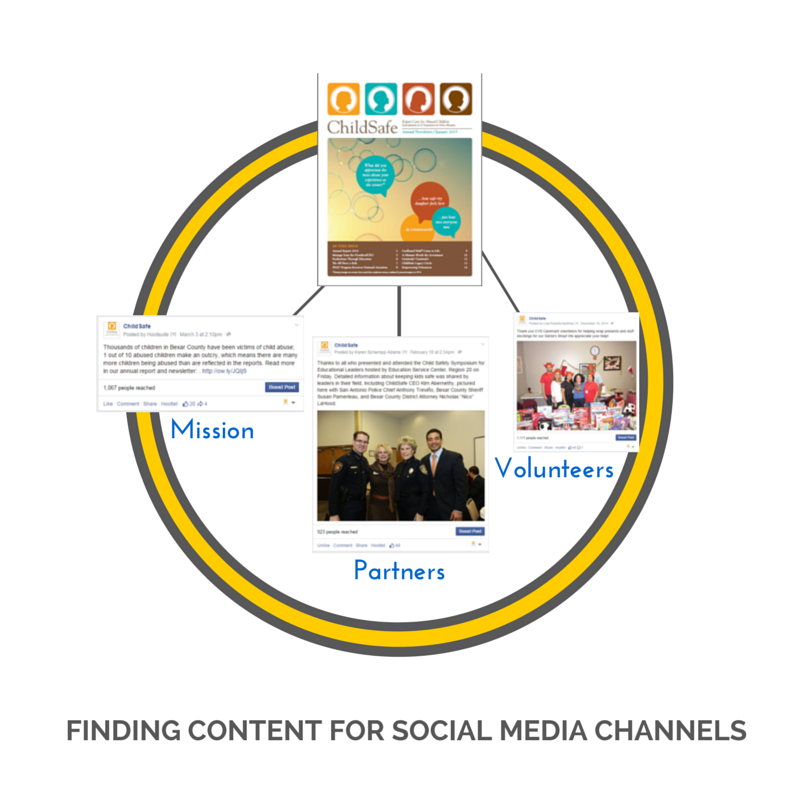 Finding content is a struggle for many of my clients. Even with a well-developed brand and strong marketing campaigns, many organizations have a tough time filling the spaces of their social media networks with content. Content is right under our noses if we know how to look for it.
Finding content is a struggle for many of my clients. Even with a well-developed brand and strong marketing campaigns, many organizations have a tough time filling the spaces of their social media networks with content. Content is right under our noses if we know how to look for it.
“I just don’t know what to say,” is a phrase I hear repeatedly. That’s a sign that you’re overthinking the concept of content. It’s not like writing a brochure or a press release, although both are great sources of content for social networks. If it’s important enough to include in your organization’s brochure, you can bet some — or all of it — should find its way into your digital profiles too.
If the brochure provides the big picture, or the macro view of your company, then content is the micro view, or the small, up-close nuggets that bring the big picture to life.
There’s nothing more traditional and all-encompassing than the annual report. A good annual report gives a complete picture of a year in the life of an organization. It might be mailed, or shared online or both. It’s the macro view. And it’s the perfect place to start mining for those content nuggets for social media, or the micro view.
Here’s a brief example using elements from the annual report from ChildSafe, a Child Advocacy nonprofit in San Antonio, Texas. What could you pull from this annual report? Here’s a list:
- Statistics about children assisted by the organization
- Information about this community issue
- Event photos
- Volunteer recognition
- Call for new volunteers
- Donor recognition
- Call for new donors
- Ways for donors to give
- Highlight programs funded by donors
- Information about education and training
- Efforts of community partners
- Key staff and their roles
- Board Members and their roles
- Fundraising opportunities
Content is right under our noses if we know how to look for it. Just like the expression “can’t see the forest for the trees.” Lots of individual trees make up the forest, just like lots of pieces of content make up the story of an organization.
